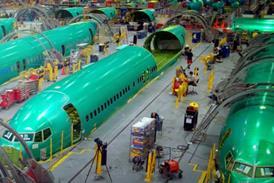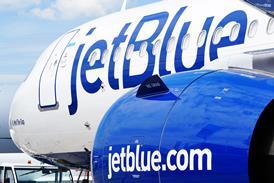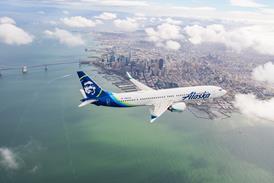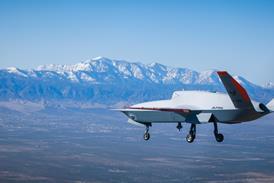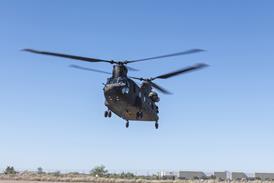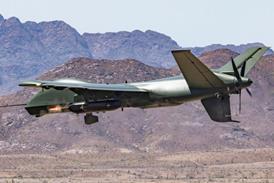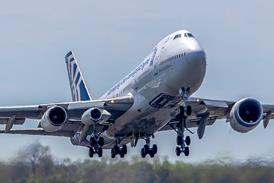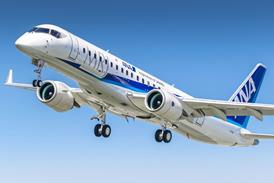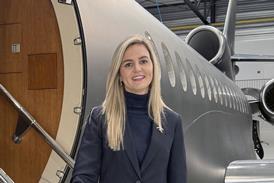Heroic dead-ends
A technology does not have to be a technical failure to be a dead-end - commerce, prejudice or politics can consign it to the dustbin of history just as effectively. So a radical machine still flying successfully but for which there is no Mk2 waiting in the wings is one without a future. In the same way, a dramatic technical advance which only ever fills a niche role, or fails to attract competitors using similar technology, is to all intents and purposes a failure - the large passenger-carrying hovercraft is the perfect example.
1 Supersonic travel
What a huge irony it is that the Concorde was retired in this, the centennial year of powered flight. In the end, high speeds and shorter journey times were not enough. Perhaps if the Concorde had been twice as big, a little slower, had a much greater range, been a lot quieter and more fuel-efficient, then it would have been a success. But there never was a Mk2 Concorde to prove that theory.
Even had there been, a 250-seat Concorde 2 on the London-New York route would have had to attract all the current business and first-class passengers to fill it - and if it had done so, its subsonic widebody sisters would not have paid their way. What airline was going to write off its investment in Boeing 747s, 777s or big Airbuses for the vicarious pleasure of flying its top passengers supersonically?
It is probably the ultra-long-range aircraft that will revolutionise long-haul travel, not through absolute speed, but through the reduced journey times brought about by eliminating stops. And perhaps the airlines will eventually run fleets of supersonic business jets to cater for the premium travel market.
It is worth remembering that in the 27 years of Concorde operations, Air France and British Airways between them notched up more supersonic flying hours than all the world's air forces together since the beginning of supersonic flight. Not bad for a failure.
2 Turbo-compound piston engine
As exemplified by the Wright R3350 turbo-compound, the engine that powered the Lockheed Constellation and Douglas DC-7 across the Atlantic in the 1950s, these monsters represented the pinnacle of piston-engine development. They gave power and efficiency, and the blow-down turbines that re-routed otherwise-wasted exhaust-gas energy back to the crankshaft had the beneficial side effect of cutting the horrendous noise of these big engines. The most spectacular of them was the Napier Nomad, which delivered the lowest specific fuel consumption achieved by a piston engine.
But such efficiency came at the cost of complexity and unreliability (even if the Wright engine in derated form successfully powered the Lockheed Neptune patrol aircraft in some spectacular long-distance flights in the 1950s). In the end, knowing that you were likely to have at least one of the four engines on your Constellation fail in the course of a round trip across the Atlantic was too much for the airlines: the early Boeing 707's P&W JT3s might have been noisy, dirty and thirsty, but they held together for much longer and delivered better payload-range performance.
3 Compound helicopter
Lots of people have tried the compound helicopter, in pursuit of the dream of something that can take off and land vertically like a helicopter, but can fly with the speed of a conventional aircraft. Kamov, Kaman, Sikorsky have all tried it - but the one that made the most noise, literally, was the Fairey Rotodyne.
Even if noise and complexity had not defeated it, a much older technology was having a resurgence on the city-centre routes for which it was devised. Especially in Europe, government-funded railways were able to deliver the 185km/h-plus block times that the compound helicopter offered, but at an apparently lower environmental and fiscal cost, although if the cost of the infrastructure had been counted in as well, perhaps some of those governments might have changed their minds.
4 Nuclear power
In the 1950s, before the promise of nuclear power had been overtaken by its status as an environmental threat, the USA expended untold millions on a nuclear aircraft programme. GE's nuclear reactor did fly, as a passenger on the Convair NB-36 testbed, and proved that a nuclear powerplant could be made small enough, light enough and (apparently) safe enough to be carried aloft. But the cost of building, in effect, a high-altitude nuclear submarine, able to cruise the skies for days or weeks at a time, was prohibitive - and in the end it was easier to just build more air bases around the world, and provide hundreds of Boeing KC-135 aerial tankers to help the B-52s to get between them.
5 Manned space travel
This is one of those niche technologies whose undeniable technical achievement and success could not deliver a viable forward role. It still goes on in a limited way, but these days its role is just to serve the International Space Station with, at best, a prospect of a return to the moon in the future - a far cry from the age-old dream of interplanetary manned travel.
Everybody has had to realise that most of the places man wants to visit are too far away for even the fastest of spacecraft - and that none of those places has an environment in which a space traveller could function. So the robot spacecraft will do far more, far better than any space traveller could.
6 Rocket-powered aircraft
The rocket has, at first sight, an elegant simplicity about it, and has had ever since the Chinese invented it 1,000 years ago. No compressors and turbines, no fancy variable intake ramps and compressibility problems, no intake drag. How attractive that must have appeared compared with the big piston engines and the emerging gas turbine in the 1940s and 1950s.
Of course there were disadvantages - unreliability, uncontrollability, the downright danger of their fuel loads and their lack of endurance. These factors all counted against the rocket-powered aircraft for anything other than specialised high-speed, high-altitude research, as with NASA's X-planes. But even they were blown away within a decade or two by machines such as the Lockheed SR-71 - perhaps flying a little lower, a little slower, but with endurance measured in hours, not minutes, so they could do a real job.
7 Flying boat
Without the flying boat, Europe and the USA would not have opened up the great global air routes before the Second World War - there was not the infrastructure of long runways, neatly positioned every few hundred kilometres around the world. So nature's own watery runway served instead. The war changed all that. The island-hopping armies on both sides built thousands of airfields, and their air forces commissioned bigger, faster, longer-range bombers and troop transports. Suddenly the flying boat was obsolete.
Air travel never did regain the perceived glamour of these lumbering giants, carrying small numbers of privileged passengers (and tons of mail) from watering hole to watering hole, often just a few hundred feet above the sea - but it did not miss their extreme discomfort in stormy weather.
8 Vertical take-off and landing
Many would argue the Anglo-American Harrier has been a huge success, and that development of a STOVL version of the Lockheed Martin F-35 Joint Strike Fighter proves the technology was not a one-shot wonder.
Many others would point out in return the dozens of VTOL projects that have not proceeded since the 1950s - whether they had vectored thrust, or dedicated lift engines, or sat on their tails and dragged themselves into the sky underneath vast contra-rotating propellers. The one thing they have had in common is that (Harrier aside) while most of them flew, none flew convincingly enough.
We will be lucky if we see the currently envisaged level of production of the VSTOL version of the JSF. It is all too easy to see cash-strapped air forces opting for the relative simplicity of the conventional take-off and landing version, even if it means upgrading their ships and airfields to accommodate it.
9 Civil air-to-air refuelling
As already mentioned, in the 1930s there was neither the inherent long-range ability in aircraft, nor the infrastructure, for regular long-range operations. The average airliner could not lift enough weight in fuel needed to get it between far-spaced suitable airfields, so the only solution seemed to be to use another aircraft to carry that fuel aloft for it.
Sir Alan Cobham of the UK even demonstrated it in limited transatlantic service in 1939. It was not sustainable other than as a flag-waving exercise (in the same way as the German experiment of staging floating flying-boat refuelling stations across the Atlantic was not sustainable) and the risks would be unacceptable in passenger-carrying operations today.
10 Big turboprop
Before the high-bypass turbofan, the turboprop seemed to be the key to gas-turbine economy. The USA did not go for the concept in a big way (there was a wonderful turboprop prototype of the Lockheed Constellation, and there was the Douglas C-133 Cargomaster), but it was the Europeans and, especially, the Russians (particularly with the Tupolev Tu-20/95 bomber and its Tu-114 derivative), who really embraced the idea.
The UK built the disastrously late Bristol Britannia and the Vickers Vanguard, an extremely efficient aircraft that answered all the criticisms that could be levelled at its smaller predecessor, the Viscount. But where there were 444 Viscounts sold, the Vanguard sold 43, and lost Vickers millions of pounds. The travelling public no longer wanted propellers: it wanted to travel quickly, quietly and smoothly on turbojet power.
Source: Flight International

